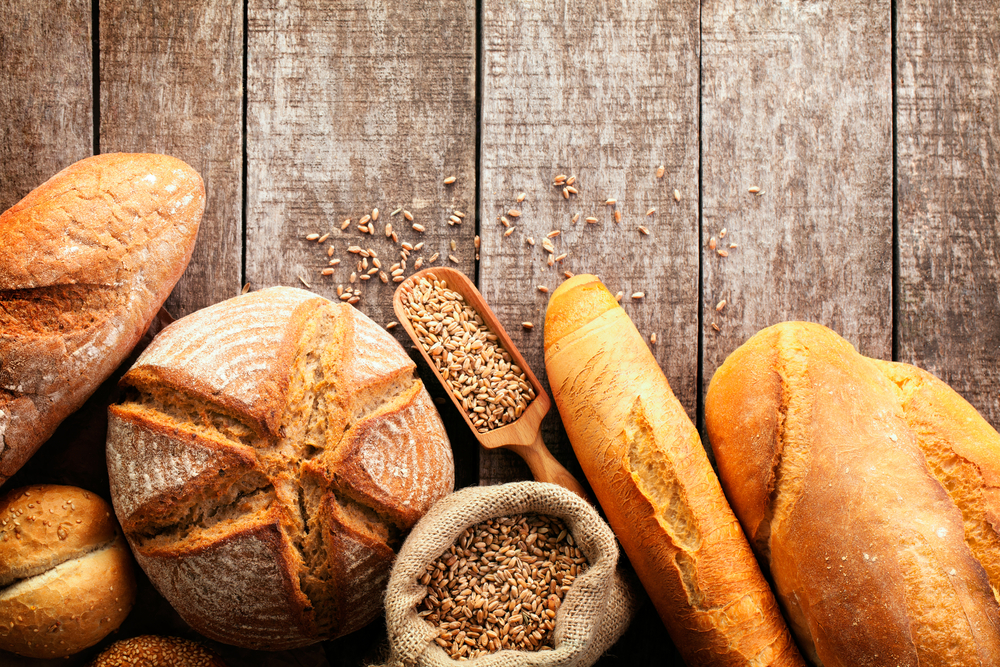by Iris Reiff
Strolling through the streets of Germany, you will find there are many family-owned and operated bakeries. The technical skills, the love and the passion for this unique craft have been passed on for many generations, and Germans are very proud of their baking culture. Trying traditional German bread definitely HAS to be on your list of things to try. There is nothing like it across the world. Trust us, we tried.
A variety of different breads, rolls, cookies, pastries and cakes are offered daily in German bakeries. People are drawn to these bakeries because of the delicious scent of these freshly baked goods.
On your quest to find the perfect bakery you might have come across two labels: “Konditorei” and “Bäckerei”. The difference is quite simple: Koditor translates to pastry chef and you will find a larger variety of sweet delicacies than at a regular Bäckerei, which focuses on savory delights like bread and rolls. All bakeries will offer a smaller selection of cakes as well.
The craft of Baking Bread in Germany explained by a German baking master
The principles of baking bread were established thousands of years ago. The basic ingredients are flour, yeast, salt and water, and the baking process involves only four key steps: mixing, proving or fermenting, baking and cooling.
Though it sounds fairly simple to become a baker, certified bakery master Josef Berrens says it takes a lot to become a certified baker. With his wife and two sons he runs a family business in Speicher, a German community located not far from Spangdahlem Air Base, Hotel & Café Berrens. To become a “Brot” or “Bäcker Meister” isn’t a small thing; it takes a few years, Berrens says.
After completing school, one must complete a three-year apprenticeship to learn the ins and outs of bread-making. Apprentices also clean up the bakery and participate in all stages of running a bakery. After the apprenticeship, they are eligible to work in a bakery. After five years of work experience they are finally eligible to train to become a “Meister” (master). At this point they need to attend school in the evenings for two more years. They must pass four exams dealing with education, theory and chemical processes, mathematics and one practical exam, which includes preparing a display of their products with a theme. Once a Meister, they are allowed to take on apprentices of their own and teach the trade of bread making to other young apprentices.
Berrens has three other Meisters working for him and one has been employed with his business for more than 30 years. The Meister works about 12 hours a day, including Sundays. “We start working about 3 or 4 in the morning,” Berrens said. “As the owner of the business, I usually don’t get to bed before 9 p.m.”
The Berrens’ bakery produces about 60 different kinds of bread, about 50 different pastries and donuts and more than 20 different cakes.
Your Guide to German Breads and Buns
The most common and least expensive bread is known as Roggenmischbrot. It is a rye and wheat flour mix. Bauernbrot is similar to Roggenmischbrot. They usually come in round loafs, a shape that has not changed for hundreds of years.
Weizenmischbrot is also similar to Roggenmischbrot, it’s a little lighter in color but also made with different proportions of wheat and rye. For a slightly more expensive bread with a higher nutritional value, try Vollkornbrot/ whole grain bread. And of course, for white bread eaters, there is Weißbrot. It does not cut or toast like American white bread, but it tastes even better.
Because the bread is fresh and doesn’t last as long as store-bought bread, Germans typically visit the bakery every couple of days.
Rolls are popular breads throughout the country. There are almost as many varieties of rolls as there is bread. At the bakery, just simply point to what you would like. The best choice is usually a mix of some dark rolls, seed rolls (sesame seeds, sunflower seeds or caraway seeds) and plain white rolls.
Many German hotels will offer white rolls for breakfast that taste wonderful with marmalade or honey.
Plain white Brötchen are continuously baked in most bakeries, so they are always available and fresh. The darker rolls with seeds make great sandwiches when filled with ham, salami or cheese, tomatoes, cucumbers, eggs or leafy salads. They are quite nutritious, and offer a good amount of fiber.
Soft pretzels or Brezeln tend to be best in the south so make sure to get some when you’re discovering Bavaria!
Every day, 1,200 different kinds of fine pastries are said to come out of German bakeries.
Cover photo by Bluskystudio
